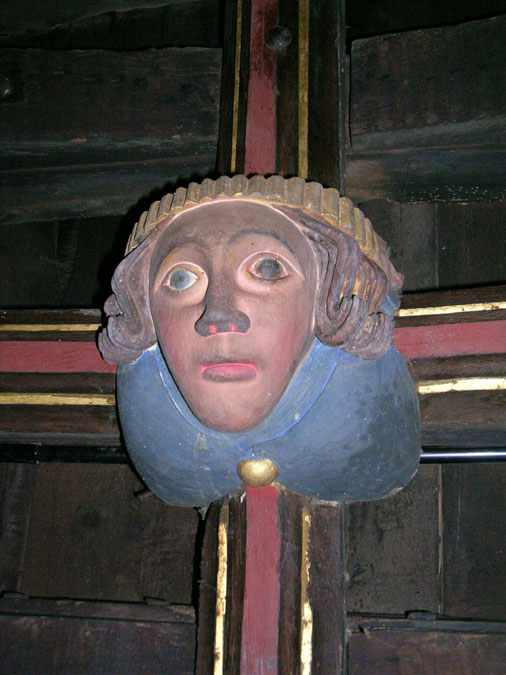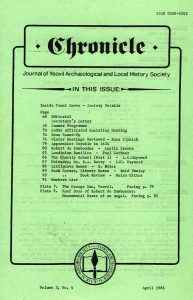This article came from the Chronicle published April 1986. Pages: 76-79
Winter Meetings Reviewed – 1985/86
Author: Russ Clynick
OCTOBER 18th THE “MEANING OF POVERTY”.
This was the subject of a talk given by Mr. W.G. Hall, until recently Head of General Education at South Bristol Technical College and now retired. It was a scholarly and detailed description of the way of life experienced by the very poor, especially in the rural communities, in the 18th and 19th centuries, as exemplified by the story of one Aaron Hall, son of a labourer of the same name. Born at Wedmore in 1770, he left home at 14 to work for different farmers for terms of six to twelve months or as a day-labourer, in different parishes in the Bridgwater area. After a leg injury at the age of nineteen his name appears in Poor Law Accounts as being in receipt of payments “for curing Aaron Hall’s leg” – and it seems he never worked regularly again. He married in 1800, had 3 childlren, all being baptised in Weare Church. It was in Weare that Aaron and Joan Hall remained permanently on Parish Relief until their deaths, she at 47 in 1826 and his in 1846 aged 76 (unusually long-lived for those days).
Living conditions were primitive and diet was monotonous. Their Parish Relief was dictated by where they lived and was often granted on an “ad hoc” basis. The number of payments rose from, 6 in 1804-5 to a peak of 48 in 1812-13 and remaining, thereafter, at between 10 and 20 each year. These payment included clothing – from stockings and hand-kerchiefs through to complete outfits, bedding and fuel. A significant remark made by Mr. Hall was to the effect that this family of Arron Hall was in some measure “better off” than countless others! After several questions from members the Speaker was thanked by the writer.
NOVEMBER 1st “THE, HISTORY OF GLOVING TRADE”.
Mr. Arthur Denner chose the subject for his talk given on our “Members Evening”. He emphasised that Gloving was a craft rather than an industry, requiring the skills of the leather dressing trades as well as those of the glovers. Animal skins vary considerably in size and texture. The cutter must produce the component pieces of a pair of gloves in such a way that they match in colour, thickness and stretchability. The assembly of the pieces, either by hand or machine stitching, calls for greater skills than are needed for other branches of the clothing trade. Some pieces are so small that an error of 1/16″ in finger seams could make Gloves unwearable. From an historical aspect records show that a guild was first formed in the 14th century, in London to regulate the training of apprentices. Gloving was a cottage industry for several centuries spreading gradually throughout the Kingdom, with guilds being formed in all the principal towns. All workers were equal in the trade learning the same basic skills, serving the same apprenticeship and receiving the same wages. Gradually imports from overseas became fashionable and their taxation gave rise to widespread smuggling. During the Napoleonic wars, gloves were needed for the army and workshops started up in the area around Yeovil. One Yeovilian, John Mayo, set up a “dressing yard” using French methods to dress raw imported skins and he was followed by others.
Up until the mid 19th century changes were few. However, the “Donkey Machine was invented by James Winter of Stoke-under-Ham to hold seams together while being stitched. At the Exhibition of 1851, leather gloves were shown from makers among others at Yeovil, Milborne Port and Queen Camel. Since that time production has vastly increased, legislation for protecting workers conditions has been passed and sewing-machines made a big impact almost eliminating hand stitching. There was always competition from abroad and markets were flooded by cheap imports. The 1914 war took many men from the trade and production dropped out in 1918 there was a short post war “boom”. When import duties were dropped, the flood of low priced European gloves led to protest demonstrations. Later the duties were reintroduced but to little effect.
Fashions changed, fewer gloves were worn, some shops and workplaces were better heated and the open car was replaced by closed transport. During the property boom of the 1960’s many firms closed, finding it more profitable to sell their sites than to make gloves. However, in 1970 there were still 12 factories and 8 tanneries in the Yeovil Rural District, producing an estimated 5 million pairs of gloves a year and. employing 15,000 full time and 9;000 part time workers. Shrinking trade has reduced this to the present total of 6 manufacturers and 2 tanneries. Mr. Denner’s talk prompted many questions from an appreciative audience.
DECEMBER 6th: ANNUAL GENERAL MEETING
. The minutes of the 1984 A.G.M. were approved and the Chairman’s remarks concentrated on the Society’s progress over the past year and his desire to see greater participation and interest in historical research. The Secretary reported a steady increase in membership and observed that there was good support for the winter meetings but that this was not always the case for summer excursions. Support had been disappointing for the all day coach trip to Gloucester but the last visit of the season, to Badbury Rings and Kingston Lacey, had been well attended. The affiliated societies meeting had been a great success thanks to the considerable assistance given by members. Mr. Moon expressed the hope that members would assist the Committee by suggesting objectives for future excursions. He also mentioned the change of venue for the 1986/87 winter meetings. The Treasurer’s Report was set out in a prepared balance sheet which were distributed at the meeting. This was discussed and approved. As reported in Chronicle, there was a need to raise the subscription rates for the first time since 1980. There was some debate on the matter before the new rates were formally adopted. The Editor acknowledged the help given to him by the “Chronicle team” but expressed the wish that a larger number of readers would make contributions to reduce the burden oil the regular scribes. He also informed members that future Chronicle’s would carry an I.S.S.N. Mr. Brooke stated that there was nothing to report with regard to new publications. The Librarian reminded members that a growing number of items were available for loan and hoped that more members would make use of this facility. The Election of Officers resulted in the following:-
| Chairman: | Bill Chapman |
| Secretary: | John Moon |
| Treasurer: | Paul Gardner |
| Editor: | Brian Gittos |
| Librarian: | Enid Pawley |
| Committee Members: | Pat Knight & Robin Ansell |
After the business of the A.G.M. was concluded there was a delightful buffet supper by many members before the evening was rounded off by an entertaining humourous duologue from Eric Dove and Pat Swetman. Their subject was a “local Derby” cricket match between Cary Fitzpaine and Podimore which ended with the bail being lost in mysterious circumstances.
JANUARY 3rd WEST CHINNOCK
. The speaker for the first meeting of 1986 was Mr Philip Nichols. With the aid of a series of excellent slices, he dealt with the history, geology topography of the West Chinnock region and the layout of the village, identifying; the principal buildings. The life of the village over the past 2 centuries was discussed in great detail. The Church, in particular, had undergone several structural changes. Some fascinating old photographs, taken in the last century, showed the old school later to be improved by the addition of a reading room, and library, the school House, the general shop and some of the more notable residences.
Early in the 19th Century a non-conformist chapel was built and was in use up to fairly recent times. At one time, the village could boast a sizeable race course, in use for about 20 years from 1886. The cottage industries were flax growing, hand weaving, sail cloth making, “out-work” gloving and aspects of agriculture. Mr. Nichols showed slides of old photographs which depicted village life, contemporary fashions and the use of some buildings around the turn of the century. There still remain several houses of distinction dating from the 17th and 18th centuries one of these being tile home of the major landowner, the Hayward family. Mr. Nichols’ talk was as entertaining as it was instructive and he was thanked by Mr. Leslie Brooke.
FEBRUARY 7th SOMERSET AND SOUTH AVON VERNACULAR BUILDING RESEARCH GROUP.
On a bitterly cold evening, Mrs. Clare Austin, secretary of S.S.A.V.B.R.G., spoke on the group’s work in this area. Founded in 1979, its aim is to record and study the traditional buildings of Somerset and South Avon. Such studies are the more important now that many old buildings are falling, into disrepair, threatened with demolition or drastic alteration. Buildings recorded by means of measured plans and written reports. To date more than 100 buildings up to 300 years old have been recorded. Copies of tile records (with the owner’s consent) are deposited at tile Somerset County Record Office at Taunton and the National Monuments Record of the R.C.H.M. The Group has recently published some valuable village surveys (e.g. Long Load and Knowle, Middle and West Chinnock) and others are in the course of preparation. Mrs. Austin illustrated her talk with a large number of interesting slides and an offer to answer questions gave rise to a lively discussion. She was thanked on behalf of the Society by Mr. Paul Gardner.

